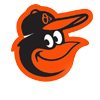PLAYER REVIEW: MITCHELL PARKER
Age on Opening Day 2026: 26
How acquired: Fifth round pick, 2020 MLB Draft
MLB service time: 2 years
2025 salary: $767,200
Contract status: Under club control, arbitration-eligible in 2027, free agent in 2030
2025 stats: 9-16, 5.68 ERA, 33 G, 30 GS, 164 2/3 IP, 178 H, 116 R, 104 ER, 25 HR, 58 BB, 103 SO, 4 HBP, 1.433 WHIP, 72 ERA+, 4.99 FIP, -1.2 bWAR, 0.9 fWAR
Quotable: “Obviously, this year hasn’t been ideal. And really, it is what it is. Roles change, goals stay the same. Still got to pitch, still got to get guys out, still trying to win ballgames.” – Mitchell Parker
2025 analysis: On the heels of an unexpected – and mostly successful – rookie year, Parker entered this season hoping to firmly establish himself as part of the Nationals’ long-term rotation plans. He beat out fellow lefties DJ Herz (who needed Tommy John surgery) and Shinnosuke Ogasawara for the No. 5 starter’s job in spring training, then got off to a fantastic start to the regular season. Five outings in, he was 3-1 with a 1.39 ERA, capped off with eight innings of one-hit ball against the Orioles on April 22.
While few believed that level of success was sustainable, it was reasonable to believe Parker could continue to be effective over the long haul. That, however, did not happen. Almost immediately after that stellar opening stretch, his performance plummeted. Over his next 25 starts, he went 5-15 with a 7.00 ERA, often digging his team into quick holes with high-scoring first innings, frequently unable to find answers for his prolonged struggles.
By the time they got to late-September, the Nationals decided it was finally time to make a change. Parker was moved to the bullpen for the season’s final week, and he immediately responded with an out-of-nowhere performance against the Mets during which he tossed 3 2/3 scoreless innings to close out a 3-2 victory and record the first save of his career in the first relief appearance of his career. He went on to make two more appearances out of the bullpen down the stretch, ultimately allowing one total run 6 1/3 innings as a reliever.
2026 outlook: Like his rotation mate Jake Irvin, who arrived one year earlier, Parker never really faced any pressure to keep his starting job despite his struggles. At least, not until the season’s final week. That should change moving forward, with no assurances from the new front office that he’ll be penciled into a rotation spot next spring.
For Parker to prove he does deserve to keep starting in the big leagues, he’s going to have to show real improvement in several areas. He reached D.C. and enjoyed early success with a deceptive fastball he could get past hitters up in the zone despite modest velocity. Then he was able to play off that pitch with curveballs and splitters down in the zone, changing hitters’ eye levels with a “North-South” approach to pitching. It didn’t work this year, with both his fastball and curveball getting hit harder and becoming below-average pitches in effectiveness.
Parker also desperately needs to clean up some fundamental issues. He has long struggled to field his own position, and while he was nominally better this season, he still hurts himself more than he helps himself in that regard. He also has a bad tendency to let the game speed up on him once something starts to go downhill, unable to stop the bleeding and turning small innings into big innings that ruin his starts.
Would Parker be more effective as a full-time reliever? There really isn’t enough evidence yet to know the answer to that question. He still doesn’t throw particularly hard, nor does he have the swing-and-miss stuff you’d typically like from a bullpen arm. So it may be starter or bust for him, with real pressure next spring to prove he should make the team or risk being sent to the minors for the first time since April 2024.




-1745819772711.png)

